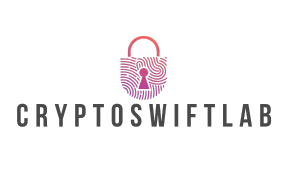Table of Contents
ToggleIn today’s fast-paced digital world, enterprise SaaS is the superhero every business needs—minus the cape and tights. Companies are ditching clunky software for sleek, cloud-based solutions that promise efficiency without the headache. Imagine a world where teams collaborate seamlessly, data is accessible anytime, and updates happen without a single IT intervention. Sounds like a dream, right?
But wait, there’s more! With enterprise SaaS, businesses can scale like never before, adapting to market demands faster than you can say “subscription model.” It’s not just about saving time and money; it’s about transforming how organizations operate in a competitive landscape. So buckle up as we dive into the world of enterprise SaaS and explore how it’s revolutionizing the way companies do business.
Overview of Enterprise SaaS
Enterprise SaaS refers to cloud-based software tailored to meet the comprehensive needs of larger organizations. This model facilitates improved operational efficiency and fosters collaborative efforts across teams.
Definition and Characteristics
Enterprise SaaS encompasses subscription-based software delivered over the internet. It features multi-tenancy architecture, allowing multiple users to share a single instance of the application. Scalability remains a key characteristic, enabling companies to easily adjust resources according to demand. Enhanced security measures protect sensitive business data. Continuous delivery ensures that users access the latest versions without manual updates. Customization options allow businesses to tailor functionalities to their unique requirements.
Importance in Modern Businesses
Enterprise SaaS plays a pivotal role in today’s business landscape. It enhances productivity by streamlining workflow processes and minimizing resource management issues. Companies can access crucial data anytime, anywhere, promoting remote collaboration. The reduction of upfront capital expenditures through subscription models improves financial planning. Organizations experience faster implementation times compared to traditional software. Adapting to market changes becomes simpler, allowing businesses to innovate rapidly and maintain competitive advantages.
Benefits of Enterprise SaaS

Enterprise SaaS offers several advantages that significantly impact organizational performance. These benefits enhance overall business efficiency and competitiveness.
Cost Efficiency
Cost efficiency stands out as a primary benefit of enterprise SaaS. Subscription-based models eliminate hefty upfront expenses typical of traditional software purchases. Organizations can withdraw funds from budgets gradually, easing financial planning. Operating costs decrease, as there are no charges for hardware maintenance or upgrades. Additionally, vendors handle updates, freeing internal IT teams for other essential tasks. A recent study revealed that companies adopting SaaS solutions saved up to 30% on overall software spending. This financial flexibility allows businesses to redirect resources towards growth initiatives.
Scalability and Flexibility
Scalability and flexibility provide another critical advantage of enterprise SaaS. Systems can adjust quickly to fluctuating business needs without significant infrastructure changes. Organizations can easily add or remove features and users based on demand, ensuring resources align with operational requirements. Moreover, cloud-based solutions enable seamless integration with existing applications. Organizations experience streamlined onboarding processes, making it easier to adapt to market conditions. According to industry reports, 70% of companies reported higher adaptability after shifting to SaaS platforms. This capability ensures organizations maintain agility in fast-paced business environments.
Key Features of Enterprise SaaS Solutions
Enterprise SaaS solutions offer various features essential for large organizations looking to enhance operational efficiency and collaboration.
Integration Capabilities
Integration capabilities play a crucial role in enterprise SaaS solutions. These platforms seamlessly connect with existing enterprise systems, such as customer relationship management (CRM) and enterprise resource planning (ERP) software. They support APIs and built-in connectors, making data transfer efficient between applications. Organizations benefit from time-saving setups and improved workflows. Integrating analytics tools allows businesses to derive valuable insights from their data. Real-time updates enhance collaboration across teams, ensuring everyone has access to current information.
Security and Compliance
Security and compliance remain top priorities for enterprise SaaS solutions. Advanced security measures, such as encryption and multi-factor authentication, protect sensitive data from unauthorized access. These solutions often adhere to industry standards and regulations, including GDPR and HIPAA, which safeguards organizational integrity. Regular security audits and vulnerability assessments ensure ongoing protection. Service-level agreements typically outline compliance obligations, fostering trust between providers and organizations. With automatic updates, security features remain current, reducing risks associated with data breaches or non-compliance issues.
Popular Enterprise SaaS Platforms
Numerous enterprise SaaS platforms lead the industry, powering businesses with robust solutions for various needs.
Salesforce
Salesforce ranks among the top enterprise SaaS platforms. It offers customer relationship management (CRM) solutions, enabling organizations to streamline sales and enhance customer interactions. With features like lead management, analytics, and automation, companies improve productivity significantly. Over 150,000 organizations rely on Salesforce to drive business growth and personalize customer experiences. Robust integration capabilities allow Salesforce to connect seamlessly with existing applications, ensuring a unified data experience.
Microsoft 365
Microsoft 365 is another popular choice for enterprise SaaS. This platform combines productivity tools, including Word, Excel, and Teams, within a single subscription. Enhanced collaboration occurs as users share documents and communicate in real-time across locations. Microsoft 365 also provides cloud storage through OneDrive, facilitating easy access to files anytime, anywhere. With built-in security measures, organizations protect sensitive information while benefiting from continuous updates and new features, resulting in improved operational efficiency.
Challenges in Implementing Enterprise SaaS
Implementing enterprise SaaS presents several challenges that organizations must navigate to succeed.
Data Migration Issues
Data migration can create significant hurdles during the transition to enterprise SaaS. Organizations often face difficulties in transferring large volumes of data from legacy systems. Compatibility issues may arise, complicating the migration process. Planning for data cleansing is essential to ensure high data quality once migrated. Moreover, if data transfer isn’t executed correctly, it can lead to data loss or corruption, undermining the entire project. Taking a step back to develop a comprehensive data migration strategy can mitigate these risks.
User Adoption and Training
User adoption and training pose challenges that affect the effectiveness of enterprise SaaS solutions. Employees must embrace new software, which can cause resistance amid shifts in workflow. Training programs tailored to different user roles help bridge this gap. Continuous support plays a vital role in encouraging employees to acclimate to the new system. Without adequate training, organizations might see a decline in productivity and collaboration. Ensuring that employees feel confident using the software leads to higher satisfaction and improved business outcomes.
Future Trends in Enterprise SaaS
Future trends in enterprise SaaS increasingly focus on advanced technologies and greater user control. These trends shape how organizations leverage software for better operational performance.
Artificial Intelligence Integration
Artificial intelligence integration transforms SaaS applications, enabling predictive analytics and automation. These capabilities allow organizations to anticipate customer needs and streamline processes. Features like chatbots enhance customer service, providing instant responses to queries. Machine learning algorithms analyze data patterns, resulting in more informed business decisions. Data-driven insights improve productivity and drive innovation across teams.
Enhanced Customization Options
Enhanced customization options in enterprise SaaS empower organizations to tailor solutions to their specific needs. Companies can configure workflows and dashboards according to operational requirements. This flexibility enhances user experience and drives adoption by aligning software with organizational goals. Moreover, APIs offer integrating with third-party applications, further extending these capabilities. Personalization at scale ensures that users receive relevant features, ultimately boosting satisfaction and engagement.
Enterprise SaaS is revolutionizing how organizations operate in today’s fast-paced digital landscape. By embracing cloud-based solutions businesses can enhance collaboration and streamline workflows while reducing costs. The flexibility and scalability of these platforms empower companies to adapt quickly to market changes.
As organizations navigate the challenges of implementation they must prioritize user training and data migration strategies to maximize the benefits of enterprise SaaS. Looking ahead the integration of advanced technologies like artificial intelligence will further enhance these solutions making them indispensable for future growth. Adopting enterprise SaaS is not just a trend but a strategic move toward sustained competitiveness and efficiency.







